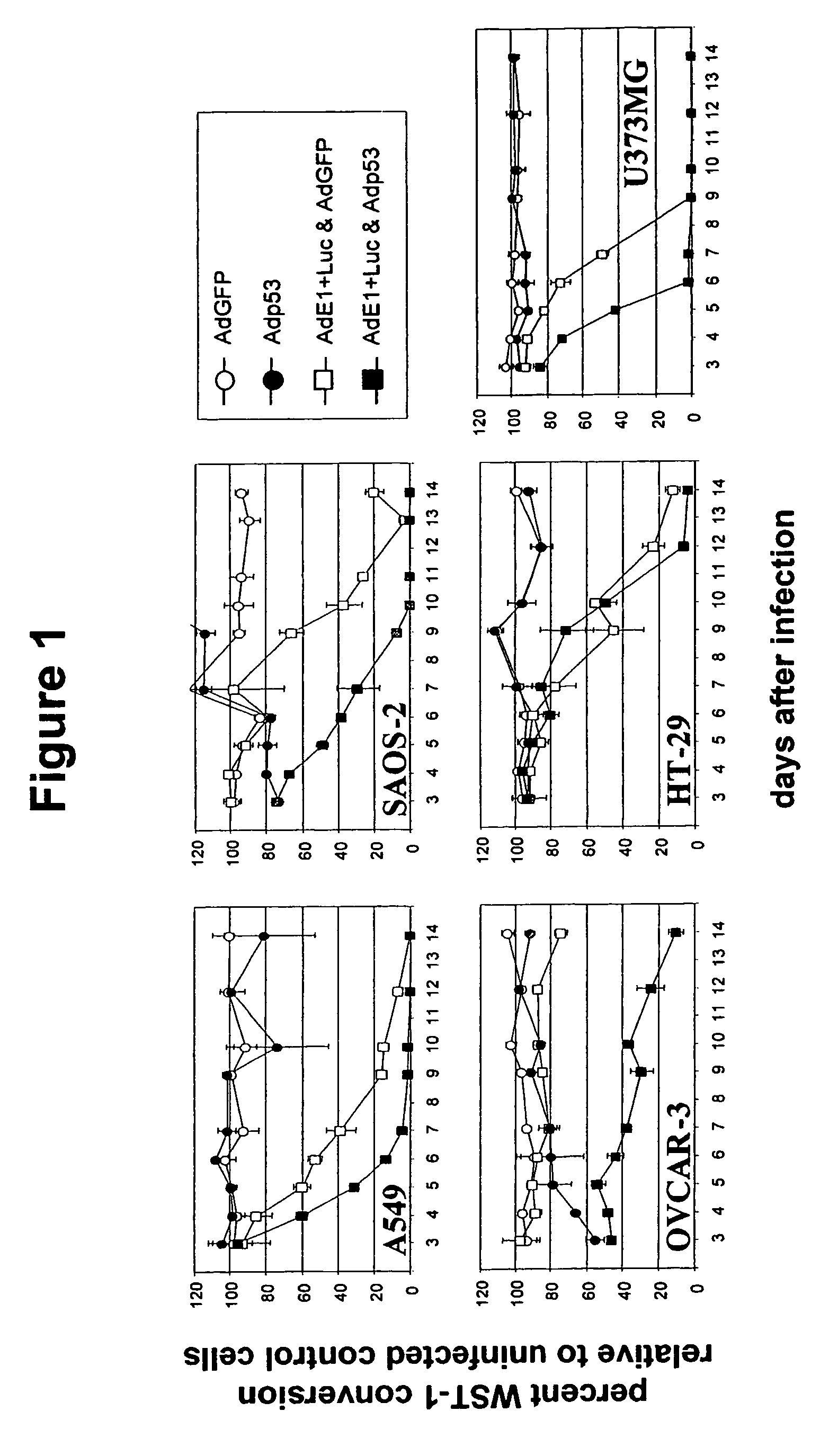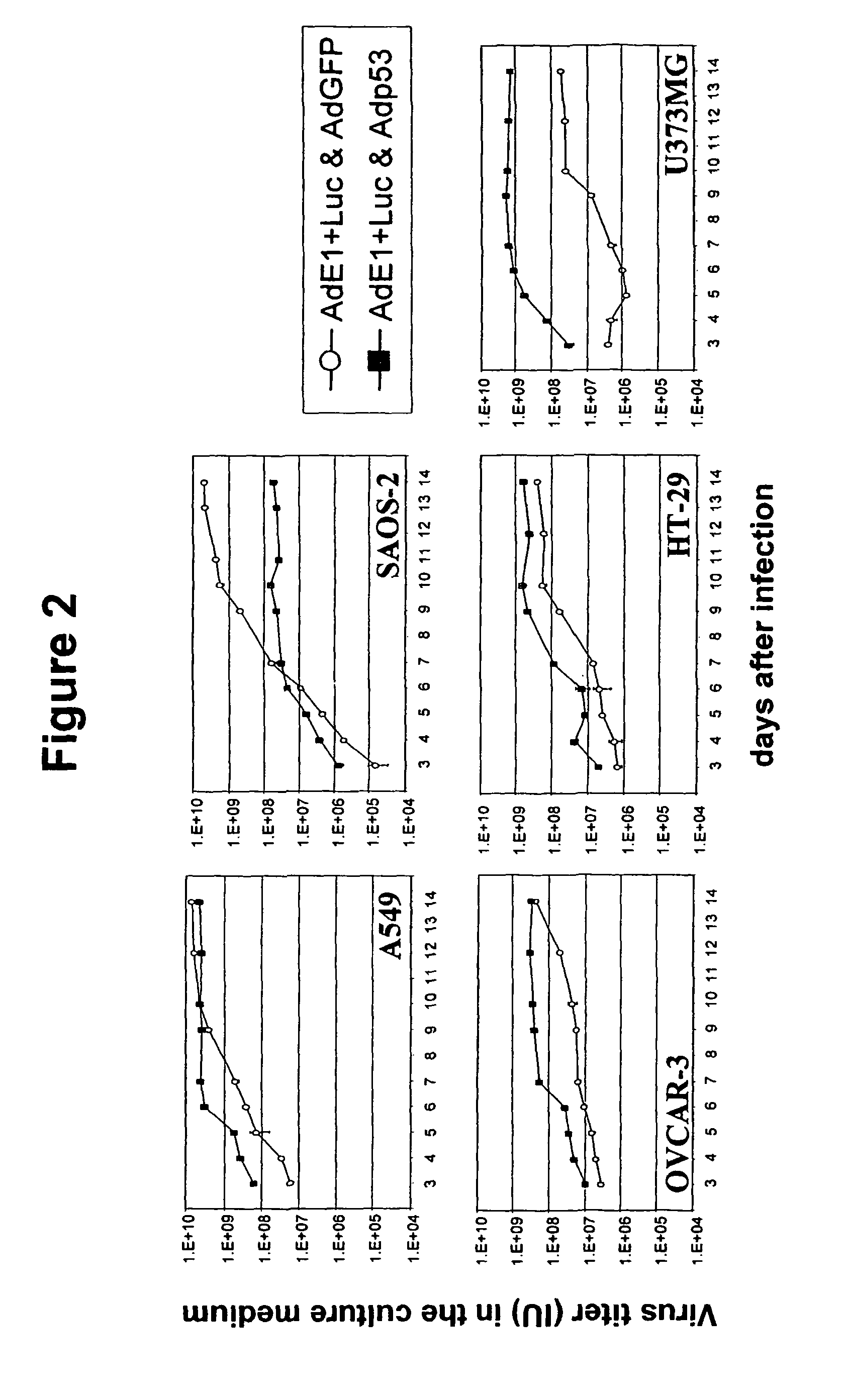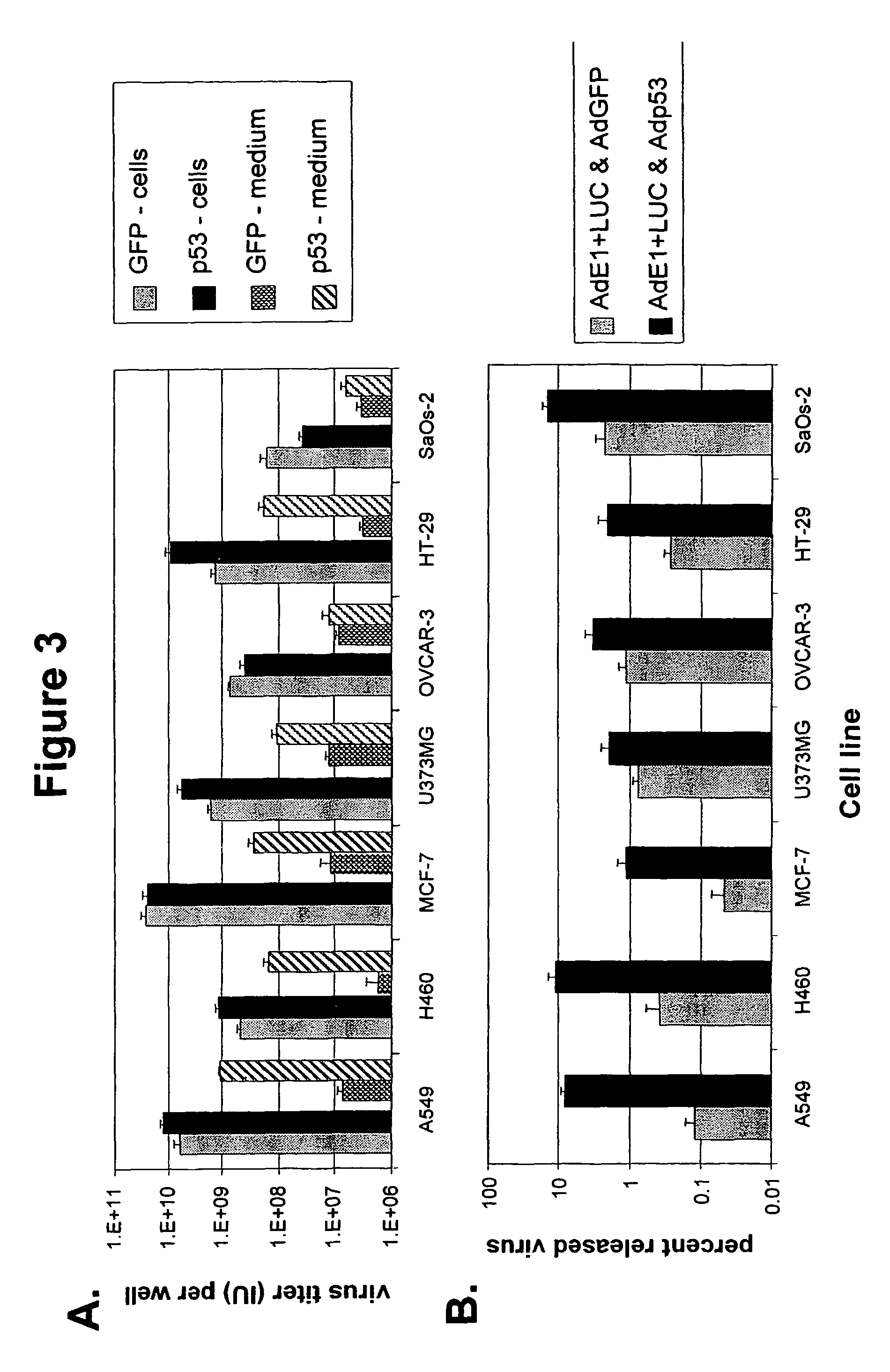Viruses with enhanced lytic potency
a virus and lytic technology, applied in the field of gene modification, biotechnology and medicine, can solve the problem of limiting the duration of in vivo replication of an administered recombinant adenovirus, and achieve the effects of rapid life cycle, and rapid adenovirus life cycl
- Summary
- Abstract
- Description
- Claims
- Application Information
AI Technical Summary
Benefits of technology
Problems solved by technology
Method used
Image
Examples
example 1
Production of Replication-Competent and Conditionally Replicating Adenoviruses Expressing the Human Tumor Suppressor Protein p53 and Control Adenoviruses without p53
[0087]To construct adenoviruses with an expression cassette for human p53 in place of the E3 region, the SVE-p53 expression cassette (SV40 early promoter-driven human p53 cDNA including intron-4) was released from pAdHumPwt.SVE (Ameyar et al., Oncogene 18(1999):5464-5472) by digestion with KpnI and XbaI (partial). The 2.6 kb fragment was inserted into KpnI / XbaI-digested pABS.4 (Microbix Biosystems, Toronto, Canada). The resulting construct was designated pABS.4-p53. pABS.4-p53 was digested with PacI and the 4 kb fragment carrying the SVE-p53 cassette and kanamycin resistance gene was inserted into PacI-digested pBHG11 (Microbix Biosystems). A clone with an insert in the orientation that places the SVE-p53 cassette on the adenovirus 1-strand was isolated and designated pBHG11-p53kan-L. The kanamycin resistance gene was re...
example 2
Expression of Functional p53 Protein in Adenovirus-Infected Cells Enhances Cell Lysis
[0090]To demonstrate that expression of a functional component of the p53-dependent apoptosis pathway during adenovirus replication augments lysis of the host cell, a dual-virus system was used in which cells were infected with equal amounts of the replication-competent adenovirus AdE1+Luc (a kind gift of Dr. R. Vogels, Crucell Holland B V, Leiden, The Netherlands) that was derived from wild-type Ad5 through replacement of the gp19k open reading frame in the E3 region by the firefly luciferase gene, and the replication-defective vector Adp53 (Ameyar et al., Oncogene 18(1999):5464-5472), expressing human wild-type p53 protein. This dual-virus system creates a situation where p53 is expressed in the context of a replicating adenovirus. As a negative control, Adp53 was replaced by the irrelevant control vector AdGFP (expressing CMV promoter-driven Enhanced Green Fluorescent Protein; van Beusechem et al...
example 3
Expression of Functional p53 Protein in Adenovirus-Infected Cells Accelerates the Release of Progeny Virus
[0092]To demonstrate that the augmented cell lysis due to expression of a functional component of the p53-dependent apoptosis pathway during adenovirus replication results in an earlier release of virus progeny, the same dual-virus infection experiment was performed as described in example 2 and at various time-points during the 14-day culture period the AdE1+Luc virus titer was determined in the culture medium of dual-virus infected cells. To this end, the culture medium was harvested and cleared by centrifugation. The cell-free supernatant was serially diluted in F12-DMEM / 10% FCS and used to infect A549 cells seeded 104 cells / well in 96-well plates 24 hours before infection. A control titration of AdE1+Luc virus with known pfu titer was included. After 20-24 hours, the culture medium was replaced by Luciferase Chemiluminescent Assay System Reporter Lysis Buffer (Promega, Madis...
PUM
| Property | Measurement | Unit |
|---|---|---|
| volumes | aaaaa | aaaaa |
| temperature | aaaaa | aaaaa |
| temperature | aaaaa | aaaaa |
Abstract
Description
Claims
Application Information
 Login to View More
Login to View More - R&D
- Intellectual Property
- Life Sciences
- Materials
- Tech Scout
- Unparalleled Data Quality
- Higher Quality Content
- 60% Fewer Hallucinations
Browse by: Latest US Patents, China's latest patents, Technical Efficacy Thesaurus, Application Domain, Technology Topic, Popular Technical Reports.
© 2025 PatSnap. All rights reserved.Legal|Privacy policy|Modern Slavery Act Transparency Statement|Sitemap|About US| Contact US: help@patsnap.com



